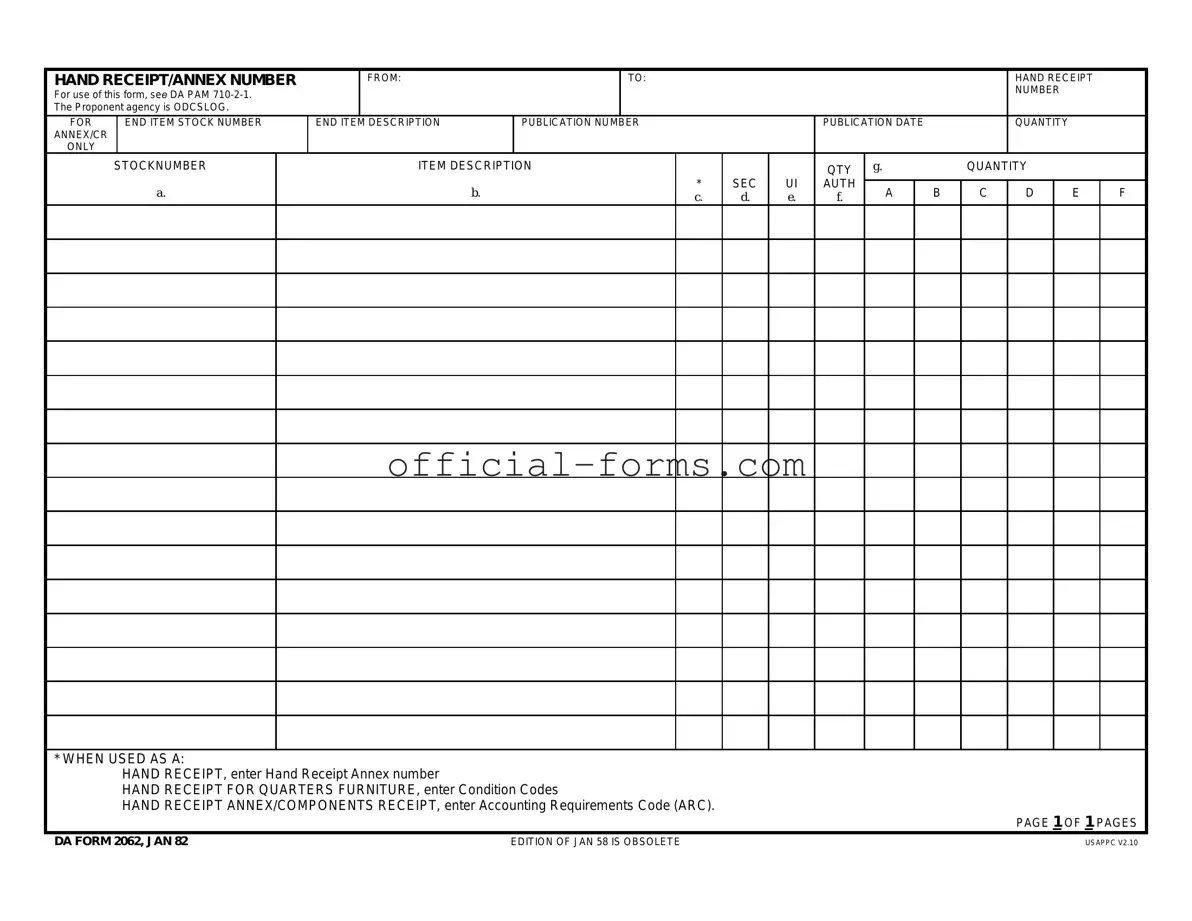Filling out the DA form can be a straightforward task, but many individuals make common mistakes that can lead to complications down the line. Understanding these pitfalls is essential for ensuring accuracy and compliance. Here are nine mistakes to avoid when completing the DA form.
One of the most frequent errors is failing to include the correct hand receipt or annex number. This number is crucial for tracking and accountability. Without it, the form may be considered incomplete, leading to potential issues during audits or inventory checks.
Another common mistake is not specifying the correct stock number. Each item has a unique identifier, and entering the wrong number can result in misplaced or misidentified equipment. Double-checking this information is vital before submission.
Many individuals also overlook the importance of accurately describing the end item. A vague or incorrect description can create confusion and hinder the ability to locate items in the future. Providing clear and precise descriptions helps maintain organization and accountability.
In addition, neglecting to fill out the quantity field correctly is a frequent oversight. Whether you’re indicating how many items are being received or issued, accuracy is key. Miscalculations can lead to discrepancies that may complicate inventory management.
Another mistake is failing to sign or date the form. This may seem minor, but without a signature, the form lacks validation. Always ensure that you sign and date the document to confirm its authenticity.
Additionally, not using the correct unit of issue (UI) can create significant confusion. Each item may have a specific unit of measure, such as each, box, or set. Using the wrong unit can lead to misunderstandings regarding quantities and inventory levels.
Many people also forget to check the condition codes when filling out the form for quarters furniture. This information is essential for assessing the status of items. Omitting this detail can result in improper handling of equipment.
Another error to watch for is incomplete accounting requirements codes (ARC) when filling out the hand receipt annex/components receipt. This code is necessary for tracking and ensuring compliance with accounting standards. Missing this information can lead to delays in processing.
Lastly, not reviewing the entire form before submission can lead to overlooked mistakes. Taking a moment to double-check all entries ensures that the form is complete and accurate. A thorough review can save time and prevent future issues.
By being aware of these common mistakes and taking steps to avoid them, individuals can ensure that their DA forms are filled out correctly and efficiently. This attention to detail not only helps in maintaining proper records but also supports overall accountability within the organization.
